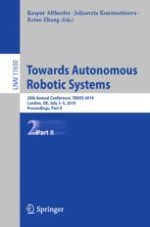The two volumes LNAI 11649 and 11650 constitute the refereed proceedings of the 20th Annual Conference "Towards Autonomous Robotics", TAROS 2019, held in London, UK, in July 2019.
The 87 full papers and 12 short papers presented were carefully reviewed and selected from 101 submissions. The papers present and discuss significant findings and advances in autonomous robotics research and applications. They are organized in the following topical sections: robotic grippers and manipulation; soft robotics, sensing and mobile robots; robotic learning, mapping and planning; human-robot interaction; and robotic systems and applications.
